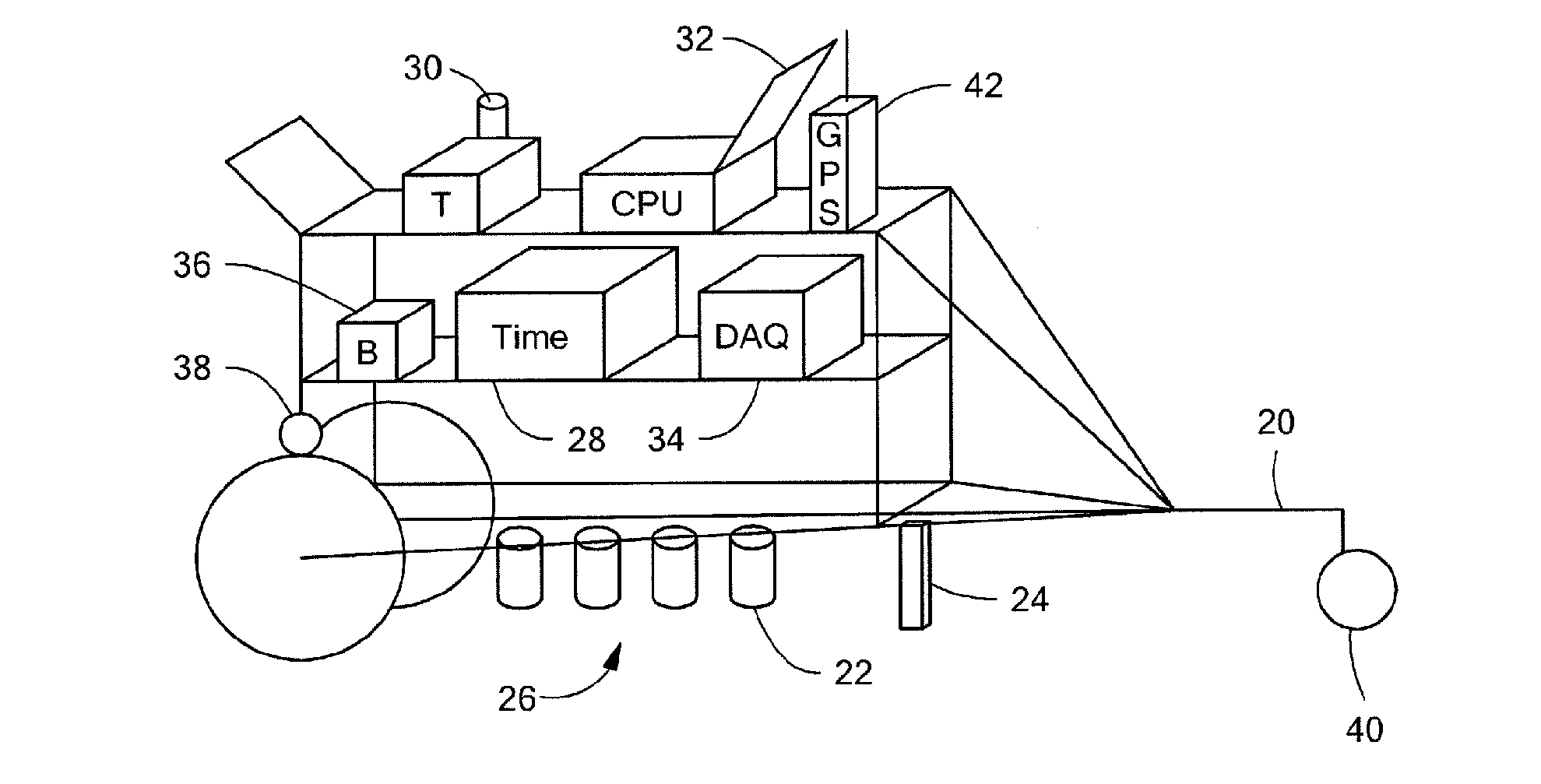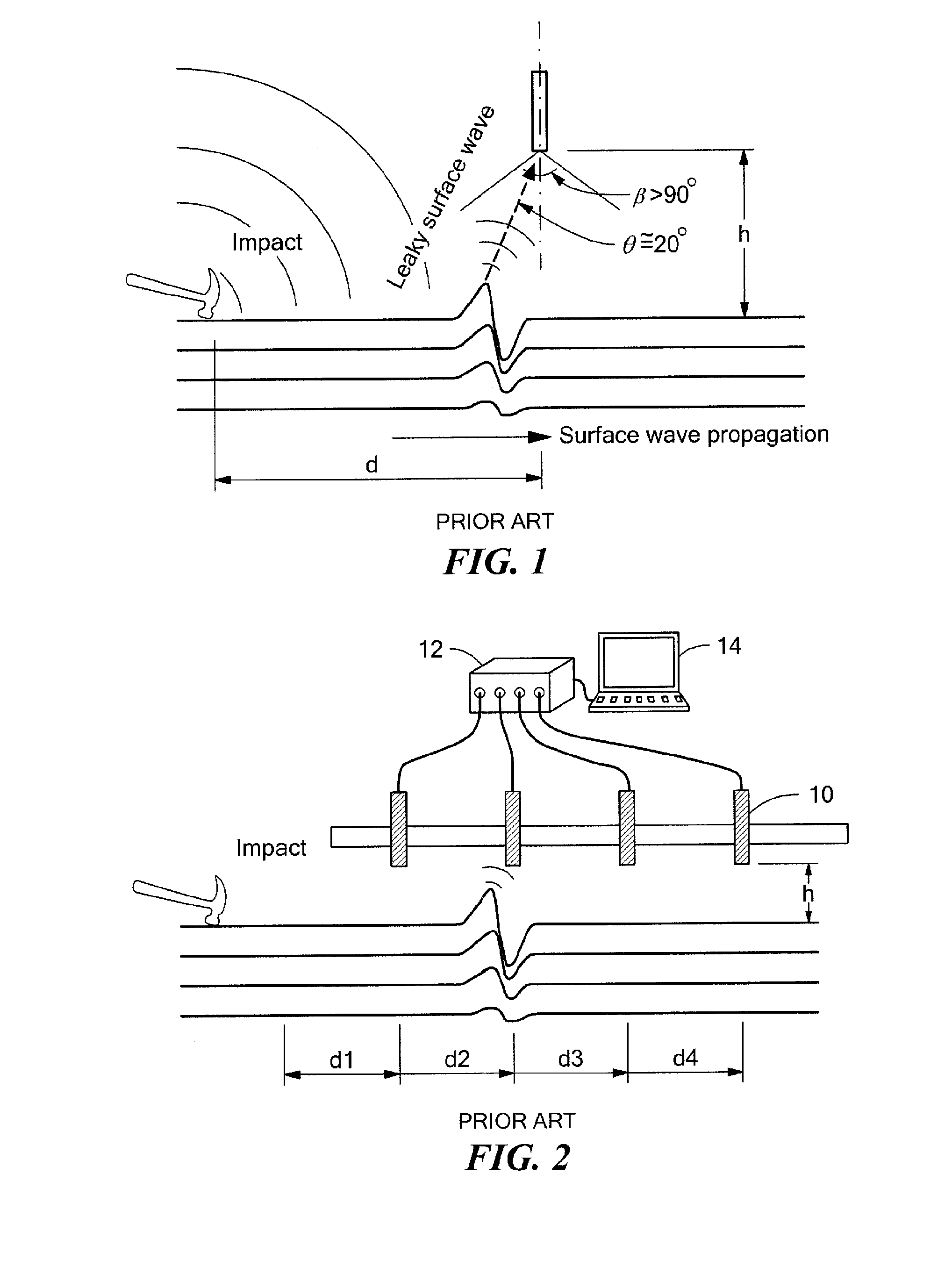Real-time pavement profile sensing system using air-coupled surface wave
a sensing system and real-time technology, applied in the direction of mechanical roughness/irregularity measurement, instruments, roads, etc., can solve the problem of extremely fast method, and achieve the effect of extremely fast method
- Summary
- Abstract
- Description
- Claims
- Application Information
AI Technical Summary
Benefits of technology
Problems solved by technology
Method used
Image
Examples
Embodiment Construction
[0026]With regard to a layered pavement structure subject to a point load impact at the surface thereof, a surface wave propagates horizontally in addition to the propagation of P waves (compressional waves) and S waves (shear waves). This is depicted in FIG. 1. Surface vibration resulting from the surface wave propagation acts as an acoustic source and radiates an acoustic wave into the air close to the surface. This radiated acoustic wave is the so-called leaky surface wave. According to Snell's law, the leaky angle θ (relative to the surface normal) is determined by:
sin(θ)=CacR(1)
where, Ca is the acoustic wave velocity in the air and CR is the surface wave (Rayleigh wave) velocity in the pavement. Ca is about 340 m / s, and CR can be 1000 m / s. Therefore, the leaky angle θ≅20°. The leaky surface wave can be detected with a directional microphone 10, which usually has an effective angle of approximately 100°.
[0027]The SASW test has typically been performed using accelerometers applie...
PUM
| Property | Measurement | Unit |
|---|---|---|
| effective angle | aaaaa | aaaaa |
| time lag | aaaaa | aaaaa |
| vertical distance | aaaaa | aaaaa |
Abstract
Description
Claims
Application Information
 Login to View More
Login to View More - R&D
- Intellectual Property
- Life Sciences
- Materials
- Tech Scout
- Unparalleled Data Quality
- Higher Quality Content
- 60% Fewer Hallucinations
Browse by: Latest US Patents, China's latest patents, Technical Efficacy Thesaurus, Application Domain, Technology Topic, Popular Technical Reports.
© 2025 PatSnap. All rights reserved.Legal|Privacy policy|Modern Slavery Act Transparency Statement|Sitemap|About US| Contact US: help@patsnap.com



